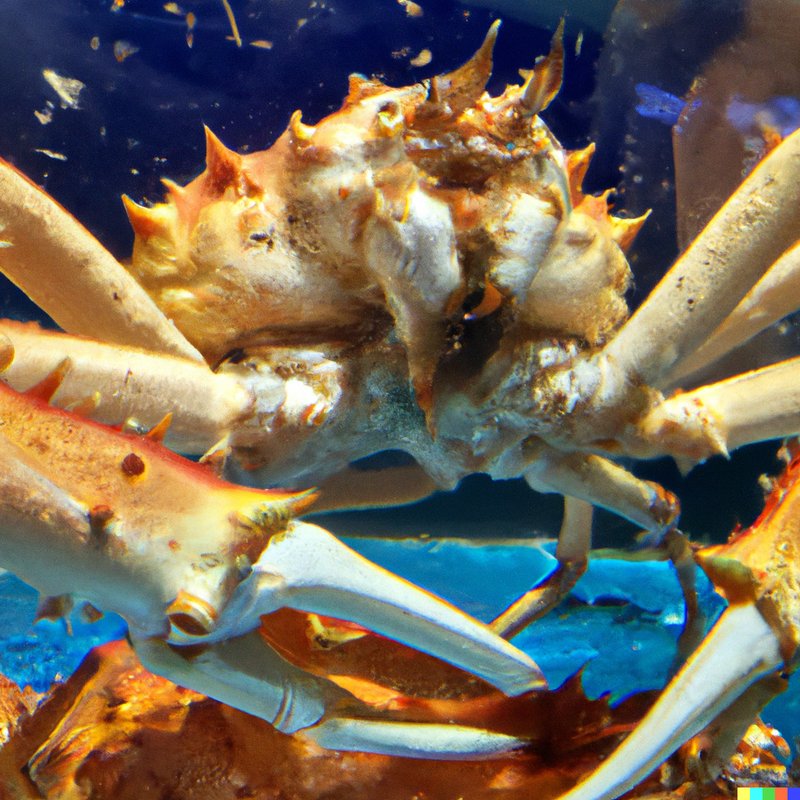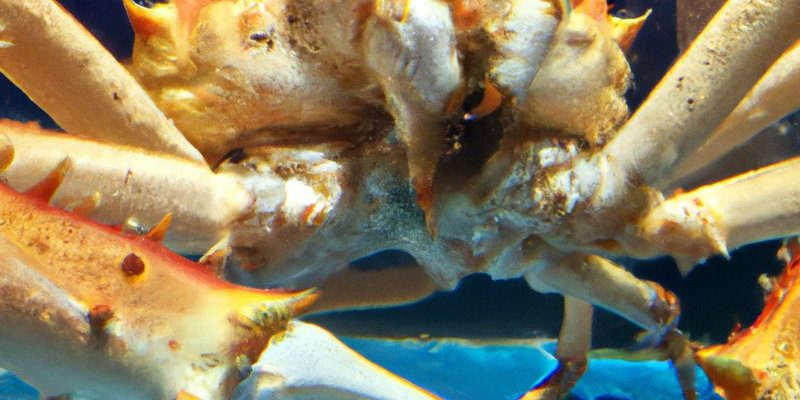
So, grab a cup of coffee (or maybe a crab cake) and let’s explore some fascinating facts about king crabs. From their impressive size to their unique behaviors, we’re going to peel back the layers of the king crab’s life and reveal some cool things you might not know.
1. They Can Grow to Impressive Sizes
When we think of king crabs, we’re often amazed by their size. Did you know that some species can weigh up to 24 pounds? Yes, you heard that right! The Japanese king crab, in particular, holds the record as one of the largest crabs in the world. Their legs can span over 5 feet from claw to claw. Imagine trying to hug one of those! They are like the gentle giants of the ocean.
What’s even more interesting is how they grow. King crabs have a hard exoskeleton, so they can’t grow like mammals do. Instead, they molt, shedding their outer shell to make room for a new, larger one. This process can be pretty stressful for them, but it’s crucial for their growth. It’s like they’re upgrading their own armor!
2. Their Color Can Vary
You might think all king crabs are the same shade of red or orange, but that’s not true! Their color can actually vary based on the species and habitat. While the red king crab is the most commonly known, they can also be found in colors like blue or even greenish. This variation is due to the different environmental factors they live in, such as water temperature and the type of food they eat.
For example, a crab’s diet rich in carotenoid pigments—found in marine plants—often gives them the vibrant reds and oranges we associate with them. So, next time you’re admiring a king crab, remember that its color is a reflection of its lifestyle and environment. Pretty cool, right?
3. They Have Some Interesting Eating Habits
King crabs are omnivores, meaning they eat a variety of foods. This includes everything from algae to fish and even smaller crabs! Their powerful claws help them crush hard shells, allowing them to access the tender meat inside. Imagine having a built-in nutcracker every time you wanted a snack!
What’s also fascinating is how they hunt. King crabs will scavenge the ocean floor for food, using their antennae-like whiskers to sense their surroundings. When they catch a whiff of something tasty, they’ll use their speed and agility to make a beeline for it. It’s like having a personal food delivery service, except that the delivery driver is a massive crab!
4. They’re Not Just Found in Cold Waters
While many people associate king crabs with cold, icy waters, particularly around Alaska and the Bering Sea, they actually inhabit a range of environments. You can find them in various ocean waters, from temperate to frigid. Even though they thrive in colder temperatures, some species prefer slightly warmer regions.
This adaptability is one of the reasons king crabs are so successful in the wild. They can migrate to different depths and regions based on water temperatures and food availability. So, if you’re thinking about where to catch them, remember, they’re quite the travelers!
5. They Can Live for Over 20 Years
Here’s something that might surprise you: king crabs can live for over 20 years in the wild! That’s quite a long life for a crab, right? Most crabs don’t have such long lifespans, so the king crab is sort of an anomaly. Their long life is attributed to their natural habitat and the predator-prey dynamics of the ocean.
During their lifespan, they go through numerous molts, each time growing bigger and stronger. As they age, they become more experienced at evading predators and finding food. You might say they’re like wise old sages of the sea!
6. They Play a Role in Ecosystems
King crabs are more than just a tasty meal; they play a vital role in their ecosystems. As omnivores, they help control the populations of various marine organisms. By eating smaller fish and invertebrates, they maintain a balance in the ocean’s food web. It’s like they’re the cleanup crew of the ocean floor!
Moreover, their presence affects the dynamics of other species in their habitat. For example, their hunting habits can influence the behavior of fish and other crabs. When king crabs are plentiful, other marine animals adjust accordingly. It’s amazing how these creatures contribute to the health of the ocean environment.
7. They’re a Commercial Treasure
King crabs are not only fascinating creatures but also a significant part of the fishing industry. Their sweet meat and large size make them a prized catch, especially in places like Alaska, where king crab fishing is a huge deal. Fishermen often face harsh conditions to bring back this delicacy to markets and restaurants.
However, their popularity has led to concerns about overfishing. The government regulates king crab fisheries to ensure sustainable practices. This means the fishing seasons are limited, and there are strict quotas to protect the crab populations. So, when you dig into a delicious crab dinner, you’re also part of a broader conversation about sustainability and responsible eating.
8. Their Mating Rituals Are Unique
When it comes to romance, king crabs have some interesting courtship rituals. Female king crabs can often be found hiding under rocks or in crevices, and the males must impress them before they can mate. The males will perform elaborate displays, waving their claws and even using pheromones to attract potential mates.
Once a female is convinced, they engage in a mating process that can last several hours! After mating, the female carries fertilized eggs for up to a year before releasing them. That’s a lot of dedication for a crab!
9. They’re Faces of Tradition
In many cultures, king crabs symbolize luxury and celebration. Eating them is often associated with special occasions—think holiday feasts or fancy dinners. Their rich flavor and meaty texture make them a favorite for chefs and food lovers alike.
In places like Alaska, there are festivals dedicated to king crabs, highlighting their importance to local culture and economy. It’s not just about the food; it’s about community, tradition, and the shared experience of enjoying something special together.
10. They Can Be Found in Surprising Places
Lastly, you might be surprised to learn that king crabs aren’t limited to the ocean. They can actually be found in various coastal areas, including estuaries and lagoons. This adaptability allows them to thrive in different environments, making them a resilient species.
This adaptability is crucial for their survival, especially as ocean conditions change due to climate. As temperatures rise and habitats shift, king crabs continue to find new niches and thrive, showing just how tough these creatures really are.
In conclusion, king crabs are more than just a delicacy on our plates. They have fascinating lives filled with unique adaptations, a crucial ecological role, and a place in cultural traditions. The next time you enjoy a king crab feast, take a moment to appreciate the journey of this magnificent creature from the ocean to your table. Each bite is a celebration of nature’s wonders!

